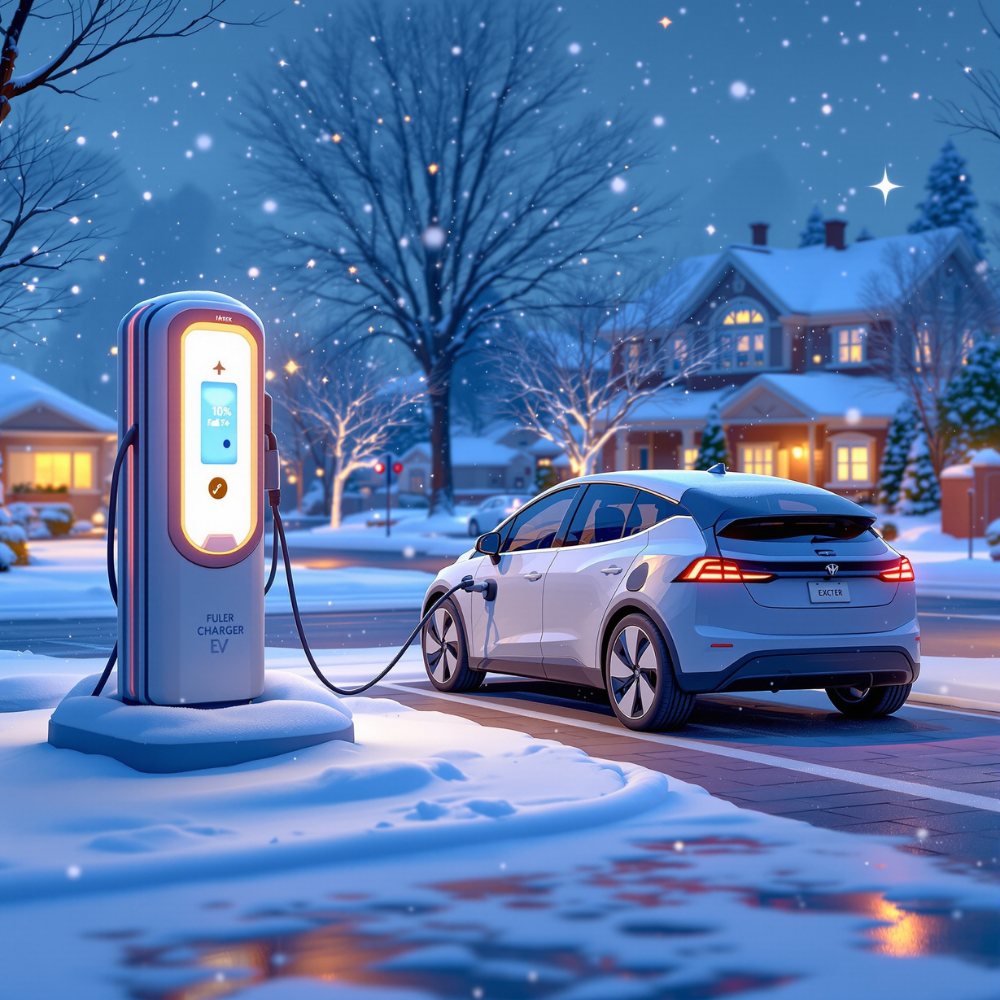
Winter can cost you range, patience, and sometimes time - but it doesn’t have to. Once you understand what cold does to the battery, drivetrain, and comfort systems, you can set things up to cruise through the season. The key isn’t a long list of “don’ts,” but a few clean routines that fit your life: charging with foresight, heating smartly, securing grip, and parking so chemistry and hardware stay in their comfort zone.
At low temperatures cell chemistry slows, internal resistance rises, and the pack is reluctant to accept or deliver high power. At the same time, thermal management needs more energy to bring cells, cabin, and glass up to temperature. You’ll see it directly in consumption and indirectly when regeneration is limited at first. In practice this means planning your daily kilometers with a little buffer, giving the car a gentle first phase, and letting the systems work instead of stressing them with abrupt load spikes. If the pack is still warm after a drive, a short top-up on the cable is worth more than a later cold start at the charger - otherwise you end up paying twice for heat.
Winter starts where rubber meets road. Softer compounds, siped tread, and the right pressure decide whether torque gets down cleanly. Because cold air drops tire pressure, check it more often and set it to the manufacturer spec on cold tires. Too little pressure raises rolling resistance, lengthens stopping distances, and eats range; too much hurts traction. If you often face slush, a slightly more “grippy” setup pays off - the tires don’t need to look sporty, they need to work.
Clear glass saves energy. A properly filled washer system with winter mix and fresh wiper blades prevents you from running the heater higher than needed. Treat door seals so they don’t freeze shut; brush off snow around the charge door so ice can’t lock it in place. It sounds like cosmetics, but it’s real range: a snowy roof kills aerodynamics, adds noise, and raises consumption - one minute with a snow brush saves many minutes on the charger.
Winter charging is a balance between comfort and efficiency. Ideally the car preheats while it’s plugged in and the charge session ends shortly before departure—cells start warm without sitting at high voltage for hours. Day to day that means shorter, targeted charging windows at home or work instead of waiting on 100 percent. On the road, pick stops so you’re not trying to pull maximum power into an ice-cold pack; in winter, a site with reliable infrastructure and easy access often beats the location with the bigger number on the sign. And if the connector feels stuck, don’t force it - clear snow and ice at the port first and let the seal live to fight another day.
The cabin isn’t a sauna. Seat and wheel heaters get you comfortable faster and more efficiently than cranking air temperature to heat the entire volume. Use preconditioning on the cable to defrost and warm surfaces; while driving, keep climate settings moderate and nudge as needed. If your car has a heat pump, play to its strengths: steady, gentle warmth instead of hot–cold swings. That keeps energy needs predictable and your range steadier than you’d expect.
On slick surfaces the car wants smooth load changes. Set regeneration so the car behaves predictably; if strong rear-axle regen lightens the back, a milder setting helps. Snow or wet modes meter torque finely and bring the stability systems in early, no shame in using them, it’s simply efficient. On long descents, pick speed and light, constant regen instead of seesawing between heavy recuperation and coasting. Better to brake once earlier and roll to the intersection than turn energy into heat at the last moment.
If the car sits for longer, a mid state of charge is where the chemistry feels best - neither full nor near empty. Outdoors, a shaded, wind-sheltered spot is worth its weight in gold; in a garage, a crack of fresh air can keep moisture at bay. In very low temperatures, a short automatic top-up can keep the system “awake” without holding high voltage. Store cables relaxed and dry; if one is frozen stiff, don’t bend it into tight radii - warm it briefly in the trunk first.
Not every site is cleared equally, and not every stall is perfect in a snowstorm. You’ll save time by favoring locations with easy in/out, clear access to plugs, and stalls that don’t constantly share power. A quiet Plan B along your route takes seconds to prepare and prevents laps around the block in a whiteout.
StromNow shows you available, suitable fast chargers, suggests smarter winter stops along your routes, and helps you time charging windows and comfort so range, time, and nerves stay in sync.